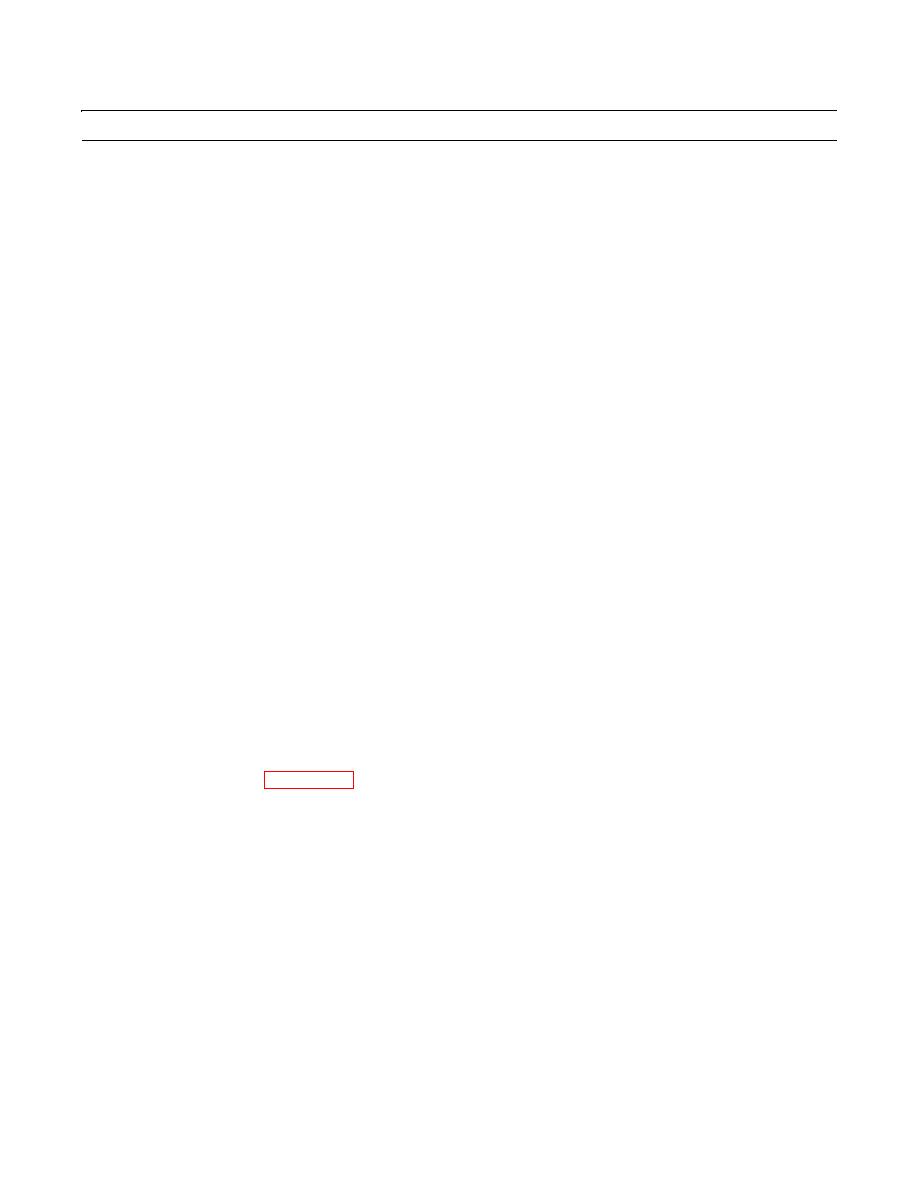 |
|||
|
|
|||
|
|
|||
| ||||||||||
|
|
 TM 10-3930-660-24-2
GENERAL MAINTENANCE INSTRUCTIONS - CONTINUED
0312 00
LUBRICATION INSTRUCTIONS
NOTE
Refer to WP 0010 00 and WP 0011 00 for detailed, illustrated instructions on proper lubrication. The follow-
ing are some general practices to remember:
1.
Use the correct lubricant.
2.
Keep lubricants clean.
3.
Clean all fittings prior to lubrication.
4.
Lubricate clean disassembled and new parts to prevent rust.
STANDARD TOOL REQUIREMENTS
1.
The following are general practices regarding the use of tools:
a.
Always use the proper tool kit and tools for the procedure being performed.
b.
Ensure that tools are clean and lubricated to reduce wear and to prevent rust.
c.
Keep track of tools. Do not be careless with them.
d.
Return tools to toolbox when finished with repair or maintenance.
e.
Return toolboxes and tools to tool storage when not in use.
f.
Inventory tools before and after each use.
2.
Some maintenance tasks may require special or fabricated tools. The "Initial Setup" of the procedure will specify any
special or fabricated tools needed to perform that procedure. Use these special tools only for the maintenance procedures
for which they are designed or called out. If you are unfamiliar with a required tool, see your supervisor.
TAGGING WIRES AND HOSES
1.
Use marker tags (Item 57, WP 0323 00) to identify all electrical wires, fuel, oil, coolant, and hydraulic lines, and any
other parts which may be hard to identify or replace later. Fasten tags to parts during removal by wrapping wire fasten-
ers around or through parts and twisting ends together. Position tags to be out of the way during cleaning, inspection,
and repair. Mark tags with a pencil, pen or marker.
2.
Whenever possible, identify electrical wires with the number of the terminal or wire to which it connects. If no markings
can be found, tag both wires or wire and terminal, and use the same identifying mark for both. If you cannot tag a wire
because it must fit through a small hole or you cannot reach it, write down the description of the wire and the point to
which it connects or draw a simple diagram on paper. Be sure to write down enough information so you will be able to
properly connect the wires during assembly. If you need to identify a loose wire, look for identifying number near end of
the wire, stamped on a permanent metal tag. Compare the number to wire numbers on the appropriate electrical sche-
matic.
3.
Identify fuel, oil, coolant, and hydraulic lines when you are taking off more than one line at the same time. Mark tags
with points to which lines and hoses must be connected. If it is not obvious which end of a line goes where, tag each end
of the line.
4.
Identify and tag other parts as required by name and installed location.
0312 00-6
|
|
Privacy Statement - Press Release - Copyright Information. - Contact Us |